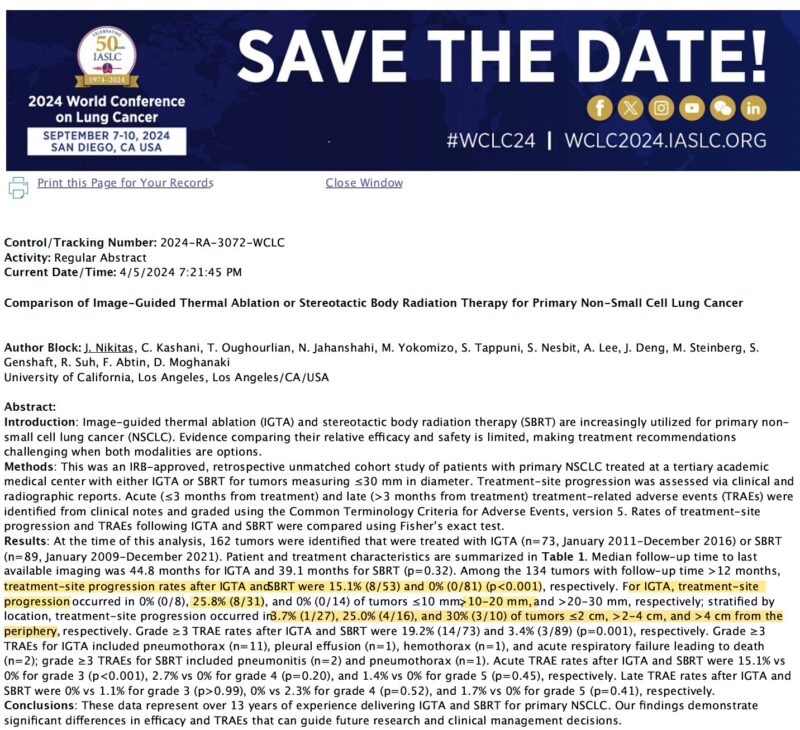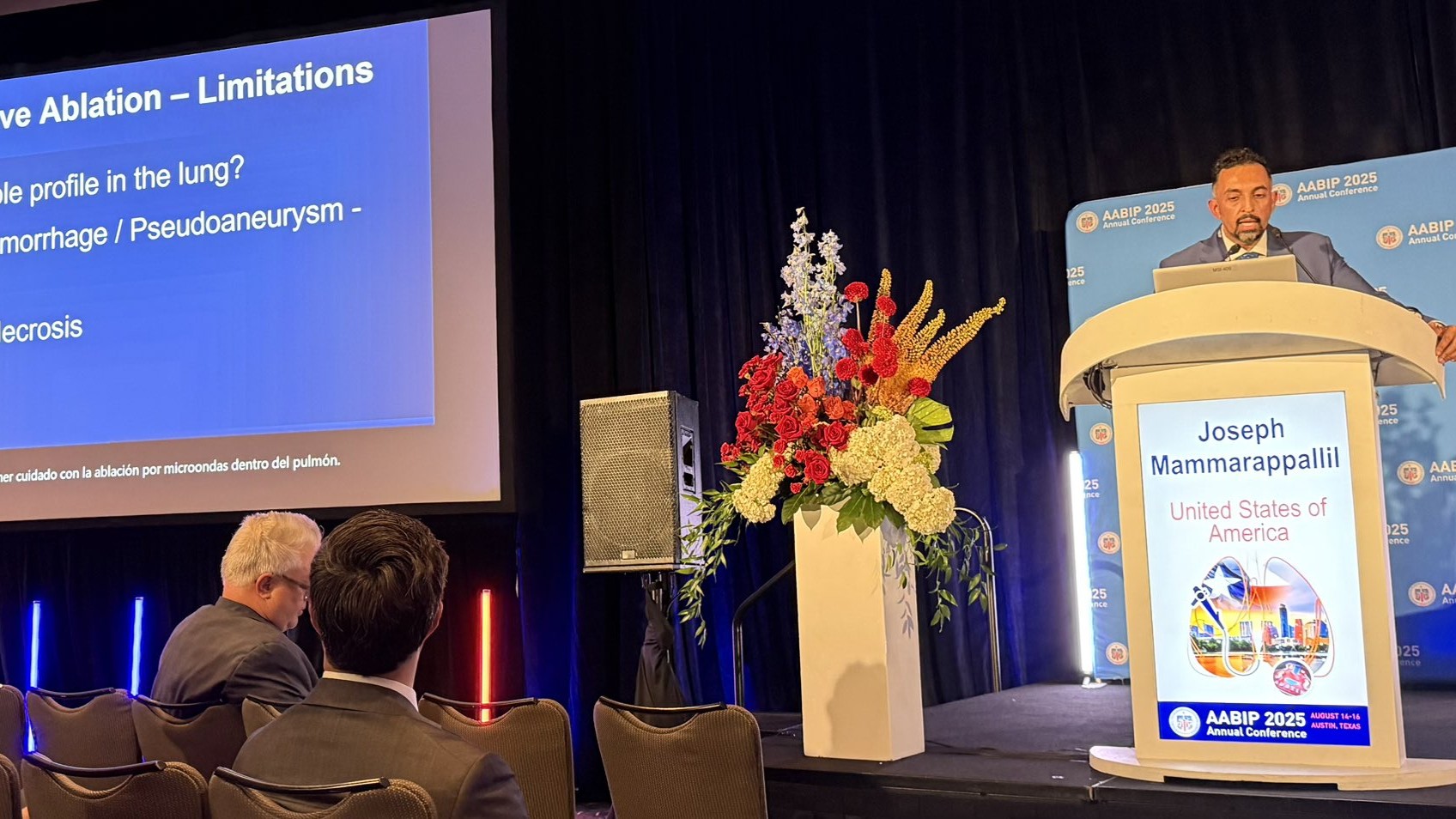Drew Moghanaki, Chief Medical Officer at Respirati, shared on X:
“Dr. Mammarappallil from Duke Interventional Radiology shares cautionary tales about percutaneous MWA of lung tumors to a room full of interventional pulmonologists, who themselves have seen FDA-mandated delays in endobronchial MWA device development.
One of the major risks of MWA in the lungs is an unintentional injury to a proximal pulmonary artery, leading to significant hemorrhage that at times can be fatal.
An unfortunate fact about MWA for lung tumors is that patients and their images often look just fine right after the MWA procedure, and their catastrophic complication can occur days later after discharge.
It turns out that when the MWA ablation zone has a wedge like appearance, it might be indicating a proximal bleed.
Given the proven safety of cryotherapy which rarely causes hemoptysis, and the high safety and efficacy of SBRT, we really need to stop and ask what the benefits of MWA are to justify its added risks as a non-operative treatment modality.
A senior colleague at UCLA Radiology recently taught me how to think about the different effects of cryotherapy vs MWA on normal lung tissue. He used the example of a piece of chicken that is either frozen or cooked in a microwave. He reminded me that once a frozen piece of chicken thaws, it still looks like chicken. The same can’t be said about a piece of chicken after it is microwaved.
As I’ve learned, MWA has been introduced because cryotherapy continues to have a high rate of failure (>20%) for larger and deeper tumors in the lungs that require long needle insertions that might not be positioned optimally.
We are learning this unfortunate fact about cryotherapy for deeper tumors in an ongoing MDT collaboration at UCLA. The data from the abstract below were recently updated, accepted for an oral presentation at #ASTRO25, and our manuscript comparing the outcomes vs SBRT is almost ready for submission.
From my perspective, I just don’t see much of a future m for MWA of lung tumors when the other non-surgical options are so good. Including LDR and HDR brachytherapy, which are probably the safest options out there.”

Title: Outcomes with multi-disciplinary management of central lung tumors with CT-guided percutaneous high dose rate brachyablation
Authors: Stephanie M. Yoon, Robert Suh, Fereidoun Abtin, Drew Moghanaki, Scott Genshaft, Mitchell Kamrava, Alexandra Drakaki, Sandy Liu, Puja Venkat, Alan Lee, Albert J. Chang

More posts featuring Drew Moghanaki.
